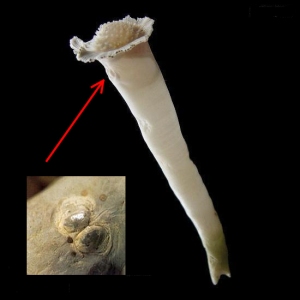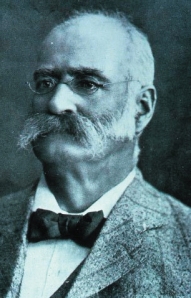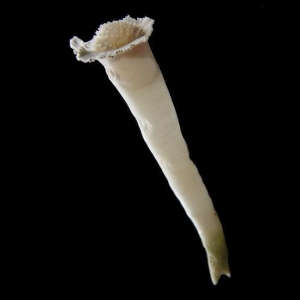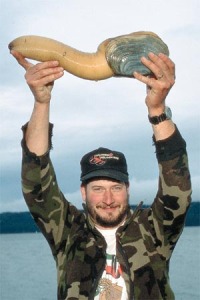Archive
Born this day
It is remarkable to me that two palaeontologists share this birthday (11th March). Both are connected in someway to Bristol, England and to the University of Adelaide and both have published papers on the Cambrian fossils of South Australia and the Cenozoic marine mollusc fossils of South Australia.
One of the two, Professor Ralph Tate (1840-1901), is a bit of a hero of mine and probably everyone else who has an interest in the evolution of Australia’s marine mollusc fauna. Since many of you may not be familiar with him I’ll give you a short bio here.
He was born in Northumberland, England and was the son of a science and maths teacher. He studied geology from an early age (begining at 12) and was appointed senior science master in the Trade and Mining School at Bristol before his 25th birthday. By the age of 24 he was curator of the Geological Society of London. After a stint as a technical officer for a mining company in Central and South America he took up the position of Elder Professor of Natural Science at the University of Adelaide in 1975, where he went on to assist in the founding of the Adelaide Philosophical Society and the Royal Society of South Australia.
He also had a strong interest in botany as well (having published on the flora of the Shetlands before leaving England for South Australia) and travelled extensively throughout Australia, collecting plants, minerals and fossils.
Major acheivements include being the first to recognise ancient glacial pavements at Hallett’s Cove, South of Adelaide (these are now known to be part of a major ice-age that struck Gondwana during the Late Carboniferous and Early Permian while our early tetrapod ancestors lolled about in coal swamps to the north) and being the first to recognise and publish on the Cambrian sediments on York Peninsula (still one of the best sources of Early Cambrian small shelly fossils in the world). But it is for his pioneering work on the marine Cenozoic faunas of southern Australia that I know him best. He single handed described 626 marine invertebrate fossil species in a series of more than 15 monographs and papers.
I was extremely honoured when in 1994 I recieved the Tate Medal, a prize awarded to the best honours research project of the year, for a graduating student of the Department of Geology, University of Adelaide.
So who is the second palaeontologist with this birthday? oh that’s me.
Wednesday Weirdo: Watering Pot Shells
This tube belongs to one of the odder forms of Mollusca that this diverse phylum has thrown out.
Believe it or not (and yes, that’s its real name) this tube with what vaguely resembles the flower-attachment of a watering pot at one end, is a bivalve. A clam shell. Indeed ther bizarre group of bivalves to which it belongs are known as the watering pot shells (the proper taxonomic name for the group is the Clavagelloidea). To understand how such a major departure from the normally conservative two-part clam shell could have evolved it is important to note that many bivalve animals outgrow their shells. Just look at this geoduck.
With this in mind the tube of the clavagelloid becomes easier to understand. What needs to happen is for the shell-secreting mechanisms that secrete the ancestral shell to go crazy and extend way beyond the boundaries of the ancestral valves and coat the entire animal in a shelly tube. Indeed a closer look at the tube will reveal a pair of tiny ancestral valves embedded within it. 
So in this picture the tube is upside down: the long siphonal tube that would reach up to clear water through the sediment is pointing to the bottom of the page.
Of course growing the tube isn’t quite as simple as extending the shells, for one thing the tube is underlain by the periostracum – a flexible, non-mineralised sheet that lies on the outside of the valves (so anatomically speaking the tube lies above the valves – even though they are embedded in it – go figure). Just how the tube of watering pot shells is secreted has been a matter of debate. Surprisingly no one has ever found a half-grown watering pot, all that is known is a single tubeless juvenile specimen of just one species, all other known watering pot specimens belong to adults with fully developed tubes. So jusy how they grow is still a bit of a mystery. I spent a lot of time earlier this year learning all I could about these fascinating bivalves, so I will be returning to them several times. Eventually I can tell you why.



Recent Comments